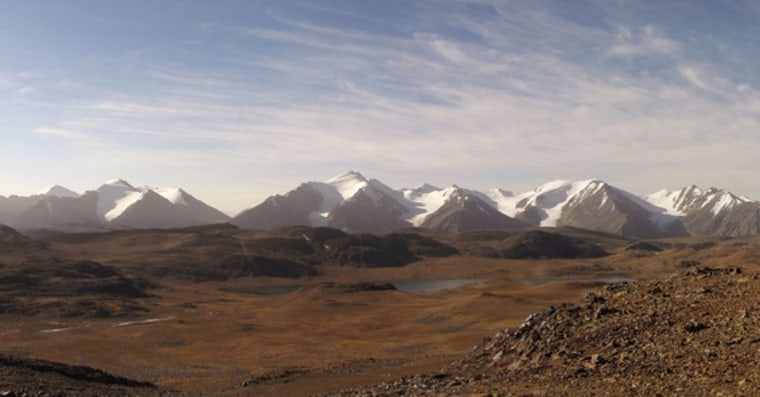The glaciers in Asia's Tian Shan mountains have lost more than a quarter of their total mass over the past 50 years — a rate of loss about four times greater than the global average during that time, new research shows.
By 2050, half of the remaining ice in the Tian Shan (also spelled Tien Shan) glaciers could be lost, and these shrinking glaciers could reduce valuable water supplies in central Asia and lead to fuel conflicts there, the study found.
The Tian Shan mountain range stretches across 1,550 miles (2,500 kilometers) of central Asia. Melting snow and glaciers from these mountains supply much-needed water to the lowlands of Kazakhstan, Kyrgyzstan and Uzbekistan, which form one of the world's largest irrigated zones. The melt also supplies water to China's northwestern Xinjiang Uyghur autonomous region, whose coal, oil and natural-gas reserves are critical to the country's economic growth. [See Photos of the World's 10 Tallest Mountains]

"If water resources really will decline there in the future, there is a big potential for conflicts," said the study's lead author, Daniel Farinotti, a glaciologist at the German Research Center for Geosciences and the Swiss Federal Institute for Forest, Snow and Landscape Research.
Despite the importance of this water supply and the growth of populations dependent on it, information about the conditions of glaciers in the Tian Shan is sparse, and estimates of how these glaciers might change in the future have been limited to the past decade.
To learn more about the Tian Shan glaciers, Farinotti and his colleagues analyzed data from the Gravity Recovery And Climate Experiment (GRACE), a satellite launched in 2002 that is jointly operated by NASA and the German Aerospace Center; and NASA's Ice, Cloud and Land Elevation Satellite (ICESat), which launched in 2003. They also developed computer models of these glaciers based on field observations from snow pits and readings taken from glacier surfaces.
Related: Sudden Impact: Glaciers Crumble in Previously Stable Area of Antarctica
The scientists reconstructed how glaciers across the Tian Shan changed in mass from 1961 to 2012. They found that the region's glaciers shrank at the rapid rate of about 5.4 billion tons per year on average.
The researchers linked the decline to increased summer temperatures in the region, possibly due to climate change.
Climate models suggest that summer temperatures will continue to rise in the coming decades, suggesting that the glaciers in the Tian Shan may shrink even further.
The scientists detailed their findings online Monday (Aug. 17) in the journal Nature Geoscience.
This is a condensed version of a report from Live Science. Read the full report. Follow Live Science @livescience, Facebook & Google+.
More from Live Science
- Ice World: Gallery of Awe-Inspiring Glaciers
- Images: One-of-a-Kind Places on Earth
- 8 of the World's Most Endangered Places
Copyright 2015 LiveScience, a Purch company. All rights reserved. This material may not be published, broadcast, rewritten or redistributed.